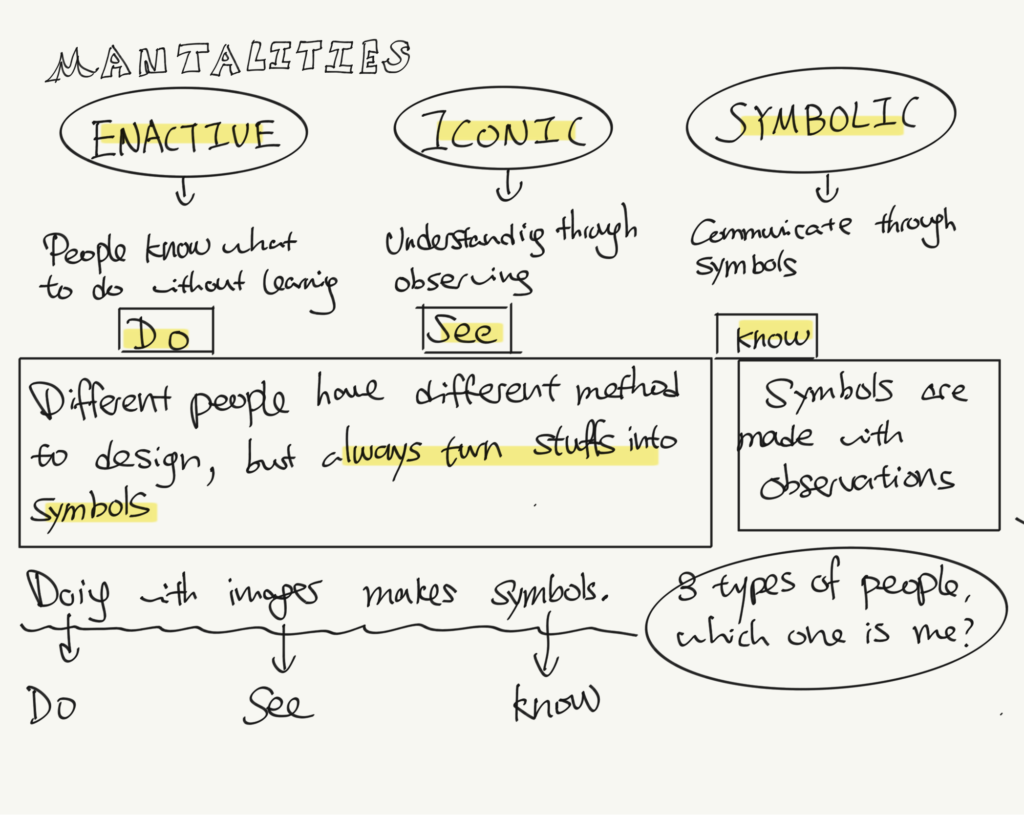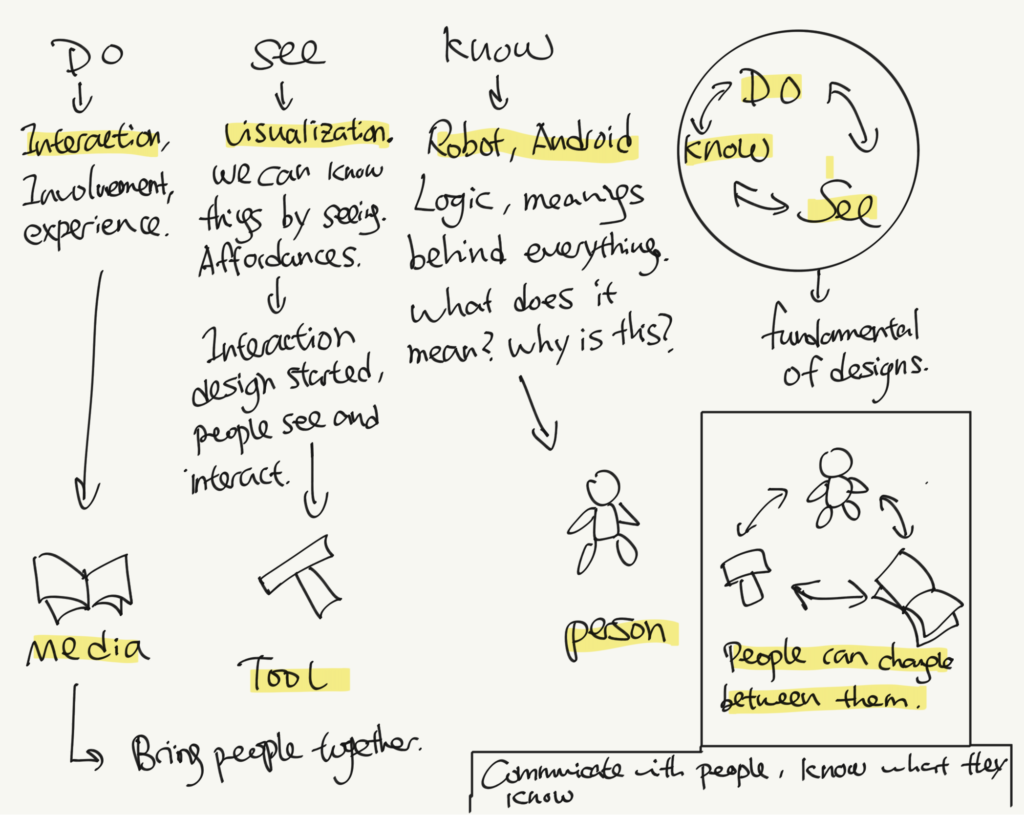In general, Bill Verplank’s talk has largely influenced my design thinking, especially when he explained sophisticated concepts of design process, by introducing what I call the ‘growing process’.
There are two ‘growing processes’ in his talk, one is created particularly for design, another one is more of the explanation for the human interactive actions.

The first half of the talk was focusing on the design thinkings. Bill has made a map, which includes the cycle of ‘see’, ‘feel’ and ‘do’. For the sake of explanation, the cycle simulates a journey from seeing something to interact with it. For instance, a person sees a football and he feels interested, so he kicked it. The entire process has went through the cycle of ‘see’, ‘feel’ and ‘do’.
Furthermore, when the designers have came to the point which requires decision making before using the method of ‘map’ and ‘path’, it gets a little complicated. For the map, all methods are given out and waiting to be chosen and used; Path wise, the designers have to take responsibility to experiment. That is to say, the ‘Path’ method requires prowess behaviour, that the designer has to accept failure to improve and create something nice. It is entirely up to the designers to choose whether going straight for the ‘Map’ or the ‘Path’. However, it is more rewarding for the ones who choose the ‘Path’.
When I am designing, I would like to go through the ‘Map’ first, because I want to know what are the existed methods, in order to create something unique. By the end of the day, it will lead me to pursue to the ‘Path’.

During the second half of the talk, Bill has moved onto the second type of ‘growing process’. It simulates a learning process from baby: They ‘do’ something without learning, everything has done enactive; Then, they ‘see’ and learn; At last, they grew up and became adults, that start thinking logically and communicate through symbols.
This is extremely useful because it does not only simulates how a person grows from a baby to an adult, but also how a designer think during the process of design.

As a designer myself, I usually think about an idea first(Symbolic), and then do research (Iconic), then finally I start making things (Enactive). What makes it interesting, is that all three stages can be done in different orders, for instance, I can do something first (Enactive), and then realize there could be an improvement(Symbolic), therefore I will look it up and find the methods to improve(Iconinc).
In conclusion, design is problem solving, we cannot find a solution through a finger snap, instead it requires process, which a lot of people have spent their life to figure out what is the best for them. In my opinion, the only way to improve our design skill is by learning and doing it systematically, and therefore we will eventually develop our own method for design.
Reference:
Opening IXDA 2011, VERPLANK, B. Video. https://vimeo.com/20285615